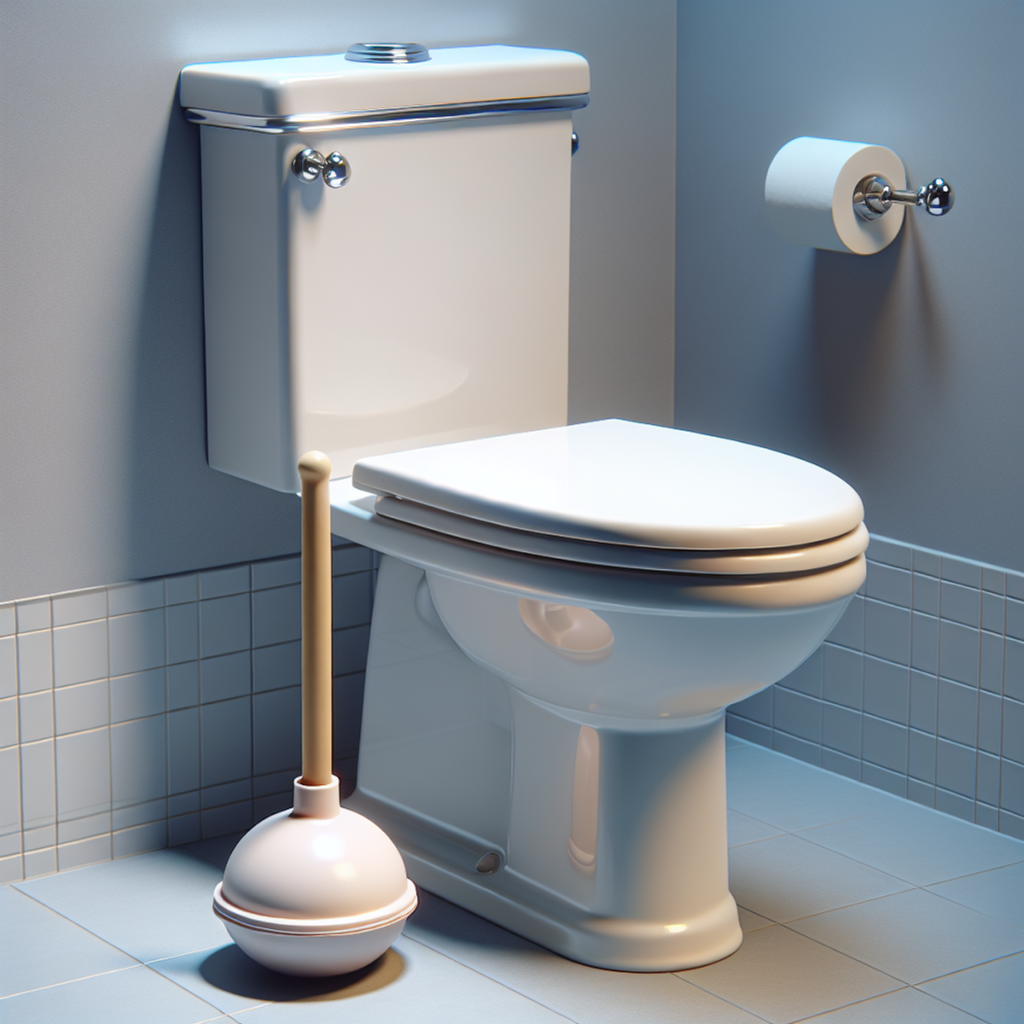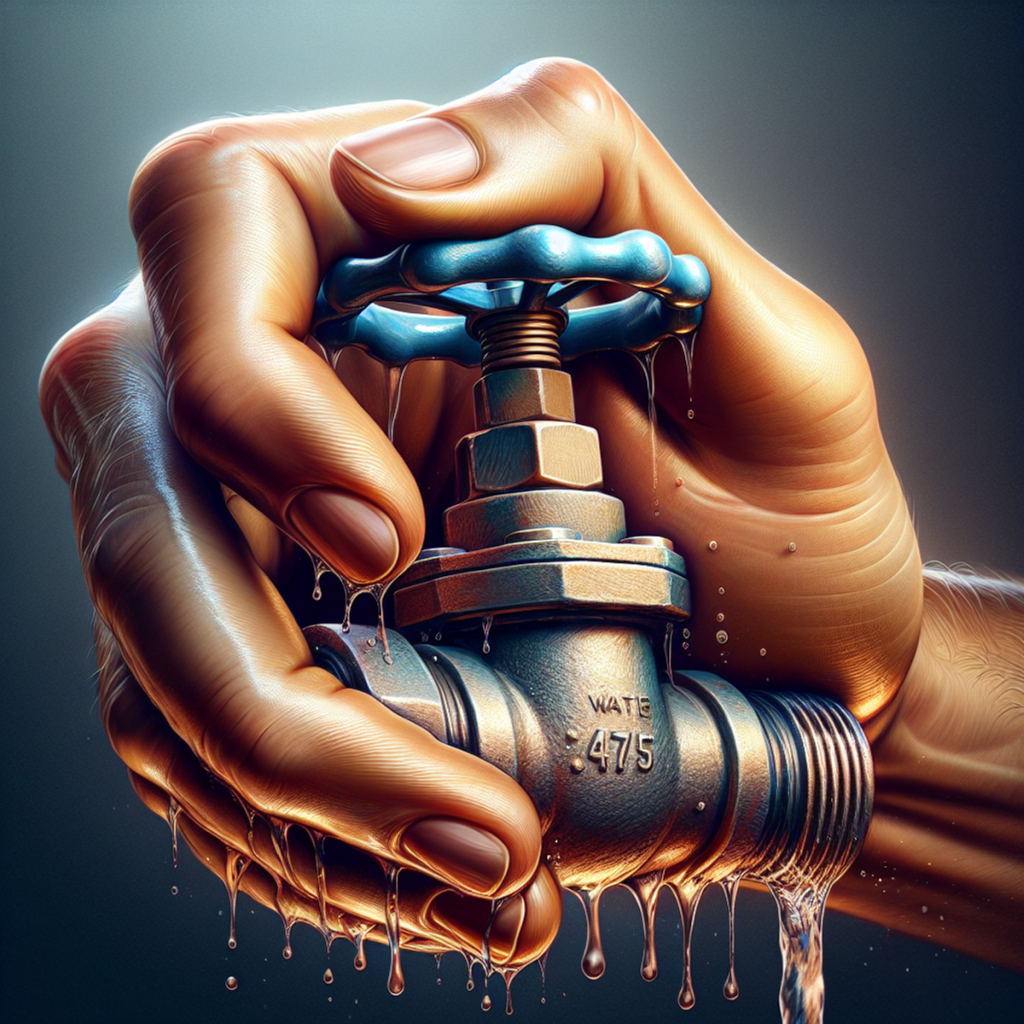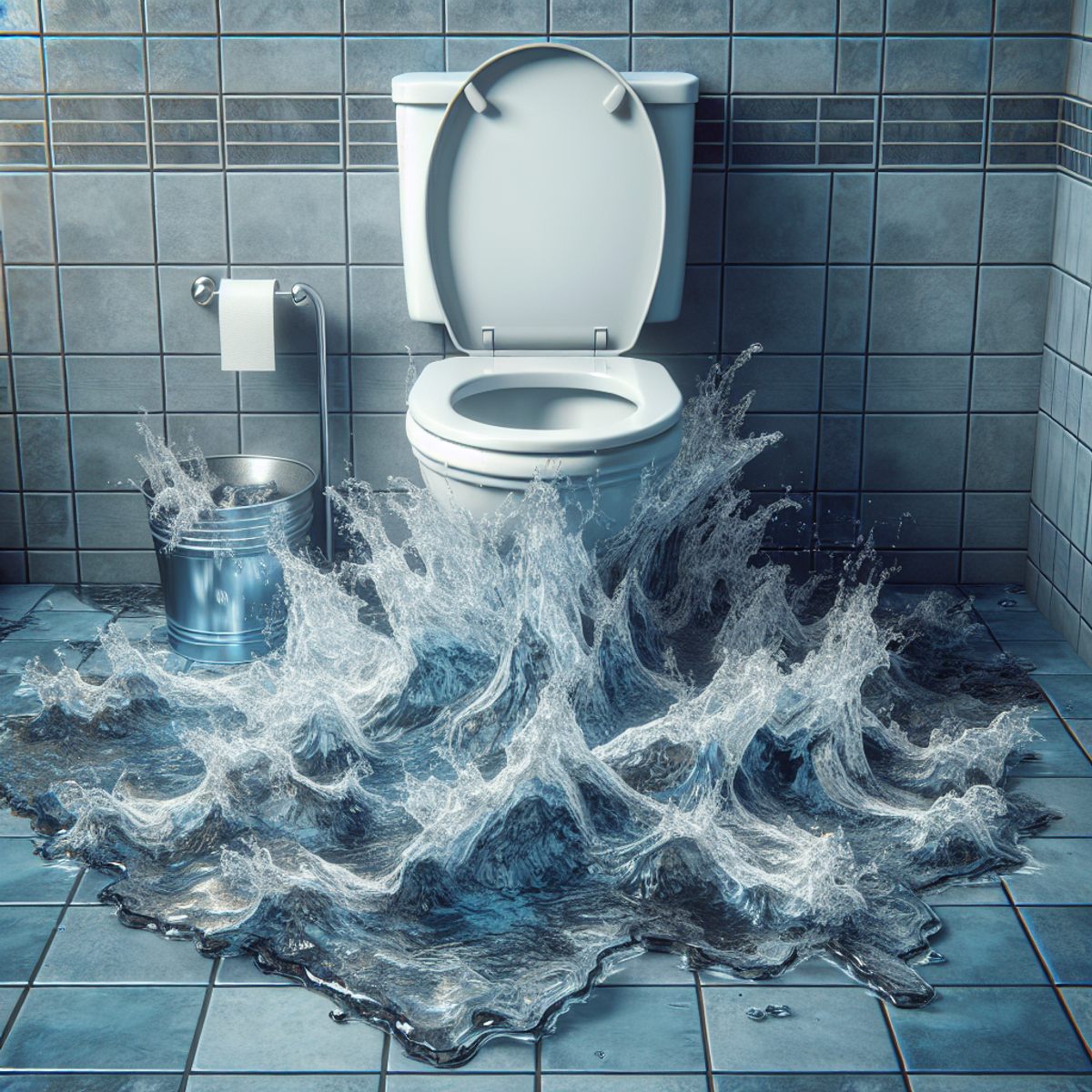Dealing with an overflowing toilet is more than just a minor inconvenience at home. It can lead to serious problems, such as:
- Water damage: The excess water can seep into floors, walls, and ceilings, causing structural damage over time.
- Health risks: Bacteria and germs present in sewage water can pose health hazards to you and your family.
- Plumbing emergencies: If not resolved quickly, the situation can worsen, leading to more severe plumbing issues that are expensive to fix.
Understanding the potential impact of an overflowing toilet will encourage homeowners to take immediate action and prevent any further complications.
Possible Reasons for an Overflowing Toilet
When your toilet starts overflowing, it’s not a pleasant experience. But understanding why it’s happening can help you find a solution faster. One of the most common reasons for an overflowing toilet is a clogged drain line.
Clogged Drain Line
A clogged drain line can turn your bathroom into a mess and even pose some risks. Here’s how clogs happen and what you can do about them:
- Excessive Toilet Paper or Debris: Sometimes, we go overboard with flushing things down the toilet. Using too much toilet paper or trying to dispose of items like wipes, feminine hygiene products, or other non-flushable debris can lead to a buildup in the drain line, blocking the water from flowing freely.
- Children’s Toys and Other Objects: Kids are curious, and sometimes they flush things they shouldn’t. Small household items can get stuck in the pipes, causing a stubborn blockage that regular plunging won’t fix.
- Hard Water Deposits: If you live in an area with hard water, minerals can build up inside your pipes over time. This buildup narrows the space for water to pass through, making clogs more likely.
Solutions for Clearing a Clog
If you’re dealing with a clogged drain line, here are some steps you can take to clear it:
- Using a Plunger: A plunger is often the first tool to try when dealing with a blockage. By creating suction and pressure with an up-and-down motion, you may be able to dislodge minor clogs. Just make sure to create a tight seal around the drain opening for maximum effectiveness.
- Professional Drain Snake: For more stubborn clogs, you might need to bring in the big guns—a professional drain snake (also known as an auger). This tool can be inserted into the toilet to break up or retrieve obstructions in the pipes.
- Manual vs. Motorized: Drain snakes come in two types: manual and motorized. Manual ones require physical effort to turn and push into the drain, while motorized ones are easier to use and offer more power.
- Safety First: It’s important to handle these tools with care to avoid causing any damage. If you’re unsure about using a drain snake yourself, it’s best to call a professional who can do the job safely and effectively.
By knowing these common causes of clogged drain lines and how to deal with them, you’ll be better prepared for toilet troubles. Just remember, if repeated plunging or snaking doesn’t solve the overflow problem, there could be underlying issues that need professional attention.
Blocked Plumbing Vents
Another common cause of an overflowing toilet is blocked plumbing vents. These vents are important for maintaining the right air pressure in the toilet system, allowing waste and water to flow correctly. Over time, debris like leaves, bird nests, or small animals can block these vents, disrupting airflow and leading to slow drains or toilet overflows.
1. Impact of Blocked Vents
When the plumbing vents are blocked, it can:
- Cause an imbalance of air pressure in your pipes
- Result in slow draining
- Lead to toilet overflows
It’s similar to trying to drink a thick milkshake with a straw that has limited airflow. Without proper venting, water and waste won’t drain effectively in your plumbing system.
2. Addressing the Issue
Cleaning out the vent pipes can restore proper airflow and prevent overflows. Here’s how you can deal with this problem:
- For minor blockages, you can try cleaning them yourself using a garden hose or plumber’s snake.
- If the blockage is severe, it’s best to seek professional help. Plumbers have specialized tools and equipment to safely remove debris from vent pipes.
Remember: regular maintenance and inspection of your plumbing vents can go a long way in preventing toilet overflows and maintaining an efficient drainage system in your home.

Main Sewer Line Blockage
Another reason for an overflowing toilet could be a main sewer line blockage. This usually happens when non-flushable items are flushed down the toilet without discretion. Some examples of these items are:
- Diapers
- Sanitary napkins
- Wet wipes
- Condoms
Tree roots can also invade the sewer line and cause a blockage. The roots have the ability to break the pipes and grow inside them, resulting in stubborn clogs.
Apart from these, debris from construction work may enter the sewer line during home renovations or building projects.
When faced with a main sewer line blockage, it’s important to understand that unclogging such an obstruction is often not as straightforward as using a plunger or snake tool.
It requires professional assistance due to the complexity of the problem and potential health hazards involved. Expert plumbers possess specialized equipment like hydro-jetting machines and video inspection tools that can accurately identify and resolve these issues.
Neglecting a blocked main sewer line can lead to recurring overflows and possible harm to your home’s structure and foundation. Hence, if you suspect a main sewer line blockage, it is crucial to immediately seek help from a professional plumber.
Back Flowing Septic Tank
A backflowing septic tank ranks highly among the possible reasons for an overflowing toilet. When a septic system is full or becomes obstructed, it can no longer process waste effectively.
The result is often a reverse flow of sewage that pushes waste back through the plumbing and into the home, causing toilets to overflow.
There are two main causes for a back flowing septic tank:
- Full Septic Tank: Over time, septic tanks fill with solids and require regular pumping to maintain their function and prevent overflow.
- Obstructions: Anything from excessive sludge build-up to tree roots can obstruct a septic system’s pipes, leading to backflow.
To mitigate these issues:
- Scheduling regular maintenance is key; this includes periodic inspections and pumping as recommended by professionals.
- In cases where obstructions are present, a professional can assess the situation and determine the best course of action to clear the blockages.
By taking these proactive steps with your septic system, you can significantly reduce the risk of an overflowing toilet and maintain a healthy, functioning waste disposal system.
Solutions for an Overflowing Toilet
To address an overflowing toilet, you need to act quickly and strategically. The first thing you can try is using a plunger or a professional drain snake to clear any clogs. Here’s what you should know about these two common solutions:
Using a Plunger or Professional Drain Snake
Toilet clogs happen often, and if you don’t deal with them right away, they can easily cause an overflow. Thankfully, most small clogs can be fixed with a simple tool that you probably already have at home: the plunger.
How to Use a Plunger Correctly
Follow these steps to use a plunger effectively:
- Make sure there’s enough water in the toilet bowl to cover the rubber part of the plunger.
- Place the plunger directly over the drain hole and make sure it forms a tight seal.
- Push down gently at first to get rid of any trapped air, then push harder with quick and strong thrusts.
- Pull up forcefully to loosen the clog and pull out any debris.
With some patience and the right technique, this method can usually fix most small clogs.
When to Use a Professional Drain Snake
Sometimes, stubborn clogs might not budge with basic plunging. In those cases, it might be worth considering using a tool called a professional drain snake. This device is longer than a plunger and can break apart larger blockages or retrieve objects that are causing the problem.
Here’s how you can use it:
- Insert one end of the snake into the opening of the drain.
- Turn the handle clockwise while pushing forward to make the snake go deeper into the pipe.
- When you feel resistance (which means you’ve reached the clog), keep turning the handle while gently pushing to either break up the blockage or hook onto it.
- After you’ve cleared the clog, slowly pull the snake back out while being careful to remove any debris that comes with it.
While both plungers and drain snakes are effective tools for dealing with toilet overflows, they aren’t the only solutions. Other methods include adjusting the float mechanism, cleaning vent pipes, maintaining the septic tank, and shutting off the water supply.
In the following sections, we’ll take a closer look at these strategies and give you some tips on how to use them effectively in your own home.
Adjusting the Float Mechanism
When dealing with an overflowing toilet, it’s essential to consider the role of the float mechanism inside the toilet tank. This device controls the amount of water in your tank and, by extension, the flow into your toilet bowl.
If your toilet overflows even when not in use, an improperly adjusted float could be the culprit. The float mechanism triggers the refill process once you flush. If set too high, it allows too much water into the tank, which can lead to overflow.
To adjust your float, follow these steps:
- First, remove the toilet tank lid.
- Typically, you’ll find either a ball float attached to a horizontal rod or a cup float riding up and down along a vertical fill tube.
- For ball floats, bend the rod attached to the float downwards slightly.
- For cup floats, slide or adjust the clip along the rod to lower its height.
Remember to check for any signs of damage as well. Cracks or corrosion can cause your float to malfunction, necessitating replacement.
Adjusting your float mechanism is an often overlooked but effective way to prevent toilet overflow. A properly aligned and adjusted float helps regulate water flow and maintain balance in your plumbing system.
Cleaning Vent Pipes
Another crucial aspect of managing an overflowing toilet is cleaning vent pipes. These pipes are important for maintaining proper airflow in your plumbing system. However, they can often get blocked with debris, causing clogs and resulting overflows.
One effective way to clear these blockages is by using professional cleaning methods. This may include:
- Inspection: Professionals use specialized cameras to find out where and what is causing the blockage.
- Removal: Using tools like powerful vacuums, professionals can get rid of the debris that’s blocking the vent pipes.
- Maintenance: Regular inspections and cleanings make sure your vent pipes stay clear, preventing future clogs and overflows.
Following these steps not only brings back proper airflow but also helps keep your plumbing system healthy overall. So when you have an overflowing toilet situation, remember to include cleaning vent pipes as part of your comprehensive response plan.
Maintaining the Septic Tank
One key factor in preventing toilet overflow lies in the regular maintenance and pumping of the septic tank. A well-maintained septic tank can effectively deter backflow, a common cause for an overflowing toilet. It’s essential to understand that this task goes beyond using a plunger or professional drain snake to clear clogs.
1. Pumping the Septic Tank
- Ensure your septic tank is pumped every three to five years. This timeframe may vary based on the size of your household and usage habits; larger families or homes with high water usage may require more frequent service.
2. Regular Inspections
- Schedule regular inspections to identify potential issues before they escalate into major problems, such as an overflowing toilet.
Though some homeowners may feel comfortable performing minor maintenance tasks like adjusting the float mechanism inside the toilet tank or cleaning vent pipes to restore proper airflow, maintaining a septic tank often requires professional assistance.
Experienced professionals have specialized equipment and knowledge to efficiently and safely handle septic system issues. They can ensure optimal function, which not only prevents overflow but also contributes to the overall health of your home’s plumbing system.
Keep in mind that preventive measures such as shutting off the water supply to prevent further damage and disinfecting affected surfaces in case of overflow are vital in case of an emergency. However, regular septic tank maintenance can significantly reduce the likelihood of these situations arising.
Shutting Off the Water Supply
When dealing with an overflowing toilet, an immediate step to take is shutting off the water supply. It is a crucial action that can help prevent further damage from the overflow. When you notice the water level in your toilet bowl rising dangerously high, swift action is necessary.
Locate and Turn Off the Water Valve
The water valve is typically located behind the toilet, close to the floor. Turn this valve clockwise to stop the flow of water into your toilet tank.
Use the Main Water Supply Valve as a Last Resort
However, in some cases, you might find it difficult to locate or operate this valve, especially if it hasn’t been used for a while. In such instances, you can resort to shutting off your home’s main water supply.
This valve is usually located where your water line enters your house – often in the basement or near your water heater.

Remember, stopping the overflow as soon as possible reduces potential damage to flooring and lower levels of your home. This action also gives you more time to address the root cause of the problem:
- Using a plunger or professional drain snake
- Adjusting the float mechanism inside the toilet tank
- Cleaning vent pipes to restore proper airflow
- Maintaining the septic tank to prevent backflow
In the event of an overflow incident, disinfecting affected surfaces becomes a priority once the water supply has been shut off and the issue at hand has been resolved.
Disinfecting Affected Surfaces
An overflowing toilet exposes your home to harmful bacteria and potential health hazards. Once you’ve stopped the water supply to prevent further damage, it’s crucial to prioritize cleanliness. Here’s how you can disinfect surfaces that have been affected by the overflow:
- Identify all contaminated areas: Check the floors, walls, and any items that came into contact with the sewage.
- Choose the right cleaning products: Use disinfectants approved by the Environmental Protection Agency (EPA) that are effective against sewage-related bacteria and viruses.
- Wear personal protective equipment (PPE): Before you start cleaning, put on gloves, eye protection, and a mask to avoid direct contact with the contaminants.
- Clean thoroughly: Scrub all the surfaces with a mixture of hot water and disinfectant. If you have rugs or upholstered furniture that got soaked, consider getting them professionally cleaned or replaced.
- Increase ventilation: Open windows and doors to improve air circulation and speed up the drying process.
By being diligent in your cleaning efforts and making sure every surface is properly disinfected, you’re taking important steps to protect your home from bacterial contamination caused by an overflow.
Seeking Professional Help
Dealing with a clogged toilet using DIY methods can work for small problems. But if those methods don’t do the trick, it’s best to bring in the pros. Professional plumbers have extensive knowledge and specialized tools that are crucial for figuring out and fixing more complicated plumbing issues.
Here’s why you should consider calling a plumber:
- Expertise on Demand: Plumbers are trained to handle all sorts of plumbing problems that regular tools can’t fix. They can quickly spot issues that an untrained person wouldn’t notice.
- Advanced Tools: Professionals use equipment like powerful drain snakes, water jetting machines, and video inspection tools to completely clear tough clogs or find hidden leaks.
- Preventing Further Damage: When you hire a plumber, you’re reducing the chances of extra damage from water leaks, mold growth, or structural decay. It’s a smart investment in keeping your home’s foundation strong.
Knowing when to admit defeat with your DIY attempts and getting help from a professional right away will ensure that your plumbing problems get fixed properly and save you from expensive repairs down the line.
Conclusion
Ignoring an overflowing toilet can lead to a cascade of home issues, from water damage to health hazards. By recognizing the common causes, homeowners can tackle the problem swiftly and effectively. Remember:
- Addressing an overflowing toilet promptly can prevent serious complications.
- Knowledge of reasons and resolutions empowers homeowners to act quickly and reduce the risk of overflows.
- Persistent problems signal the need for professional insight; plumbers bring specialized skills to restore order and safety.
When faced with toilet troubles, decisive action paired with expert advice ensures peace of mind and a well-functioning bathroom.

